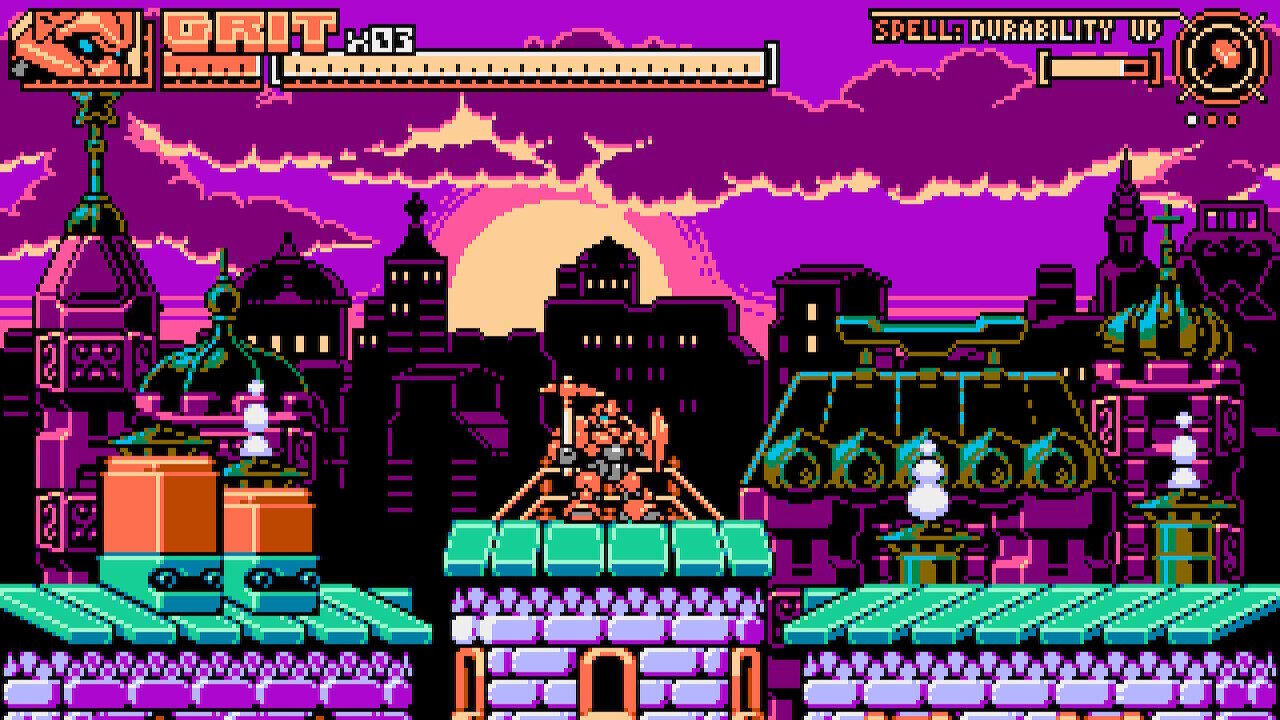Panzer Paladin review
Panzer Paladin is a new NES-styled title from Tribute Games, in a similar vein to Shovel Knight. Much like that game, Panzer Paladin draws a lot of inspiration from the 8-bit classics, and the combination of elements from multiple games you know and love culminates here into something far greater than the sum of its parts. More than simply a good homage however, Panzer Paladin is a shocking original game, and it delivers a topnotch retro-styled adventure.
You could guess many of PP’s influences simply from viewing screenshots or a short trailer, although you could easily be mistaken on the specifics. The stage select screen, which shows a boss for each locale, will probably give you Mega Man vibes. Meanwhile the platforming gameplay and downward thrust attack might remind you of Duck Tales. And these titles might have influenced PP—they most definitely helped shape Shovel Knight!—but I don’t think they are actually this game’s main inspiration.
The biggest influences on Panzer Paladin appears to come from The Legend of Zelda series; especially Zelda II: The Adventure of Link, and even some Zelda: Breath of the Wild.
The 2D platforming with its sword & shield combat is Zelda II all the way. You can attack high or hold down to attack low, plus the downward thrust is straight out of Zelda II as well. And then there’s Grit’s shield, which will automatically block attacks that hit it, both up-close swings and projectile, which is most obviously drawn from The Adventure of Link.
For the BOTW connection, a core element of PP is finding and using multiple weapons. These can sometimes be recovered from downed enemies, or found hidden in the environment as you traverse a level. And all weapons will eventually break. As you connect blows with a weapon, its durability meter decreases, until it finally busts into pieces. You can optionally throw weapons as well! While this might sound annoying—it's certainly the most widespread gripe about BOTW—there is usually more than enough weaponry laying around, and PP gives you more options for how best to utilize everything.
For example, every weapon has a “spell” associated with it. If you intentionally break a weapon directly—by holding down L & R for a couple seconds—it will activate that weapon’s spell, resulting in healing, an area attack, or some kind of temporary stat boost (Attack Up, Durability Up, Wings for flight, etc). This lets you strategically choose which weapon to use and when, basing the decision on more than the tool’s range and durability.
Weapons are also used to activate mid-level checkpoints. By inserting a weapon into a checkpoint Sword in the Stone-style, your progress is saved up to that point. This means leaving the weapon behind of course, so I try to use a relatively weak weapon which I’ve already pushed nearly to its breaking point. If you choose to remove the weapon from the stone again, you do get it back, but should you then die, you’ll have to start back at the beginning of the level again. (You also only have a set number of lives to try the level before you get a Game Over, so keep that in mind.)
Finally, weapons you’ve collected throughout your adventure can be melted down for parts and used to extend Grit’s health bar in the Laboratory menu. This provides yet another option for making use of PP’s breakable weapons.
There’s a huge variety of weapons too: swords, daggers, spears, staffs, hammers, axes, even some sporting equipment in there. Range and damage type differs for each. You can even get your pixel art on and create your own original weapons in the Blacksmith mode. That is an absolutely sick addition.
Piloting a robot and being able to exit the vehicle reminds me of Blaster Master. When Flame jumps out of Grit’s cockpit and takes off on foot, she’s extremely vulnerable, but not helpless. Flame actually has her own whip attack, which in combination with items hidden in breakable walls, and the overall occult elements, strongly remind me of Castlevania. This game’s got it all!
It terms of audio and visuals, PP takes the 8-bit style all the way to 11. This is another fantastic example of looking like an NES game, but actually doing things far beyond that console’s limitations. The chiptune tracks included are stellar, toe-tapping bangers. Not only are the pixel art sprites and backgrounds just immaculate, but the cinematic sequences absolutely nail the aesthetic sensibilities of classic 80’s anime. It just couldn’t look any cooler than this, y’all.
In the end, Panzer Paladin is super impressive, and well worth its indie game price tag. If you are a fan of retro-styled games like Shovel Knight, classic 8-bit adventures like Castlevania and Mega Man, or you just want to see someone rehabilitate Zelda II’s reputation, this one is for you. Obviously I’m right there in the target demographic for this kind of thing, but I’m very confident declaring that this game will not disappoint. Highly recommended.







